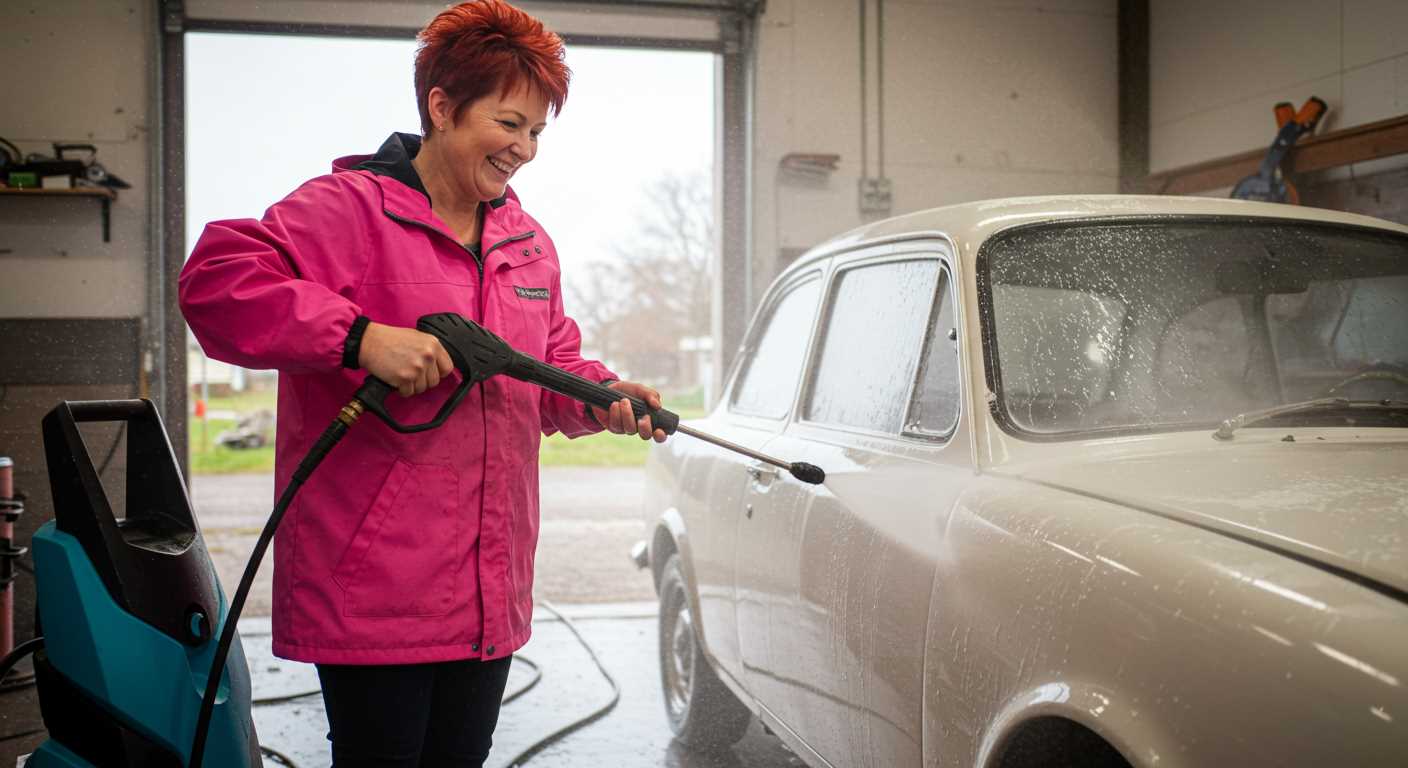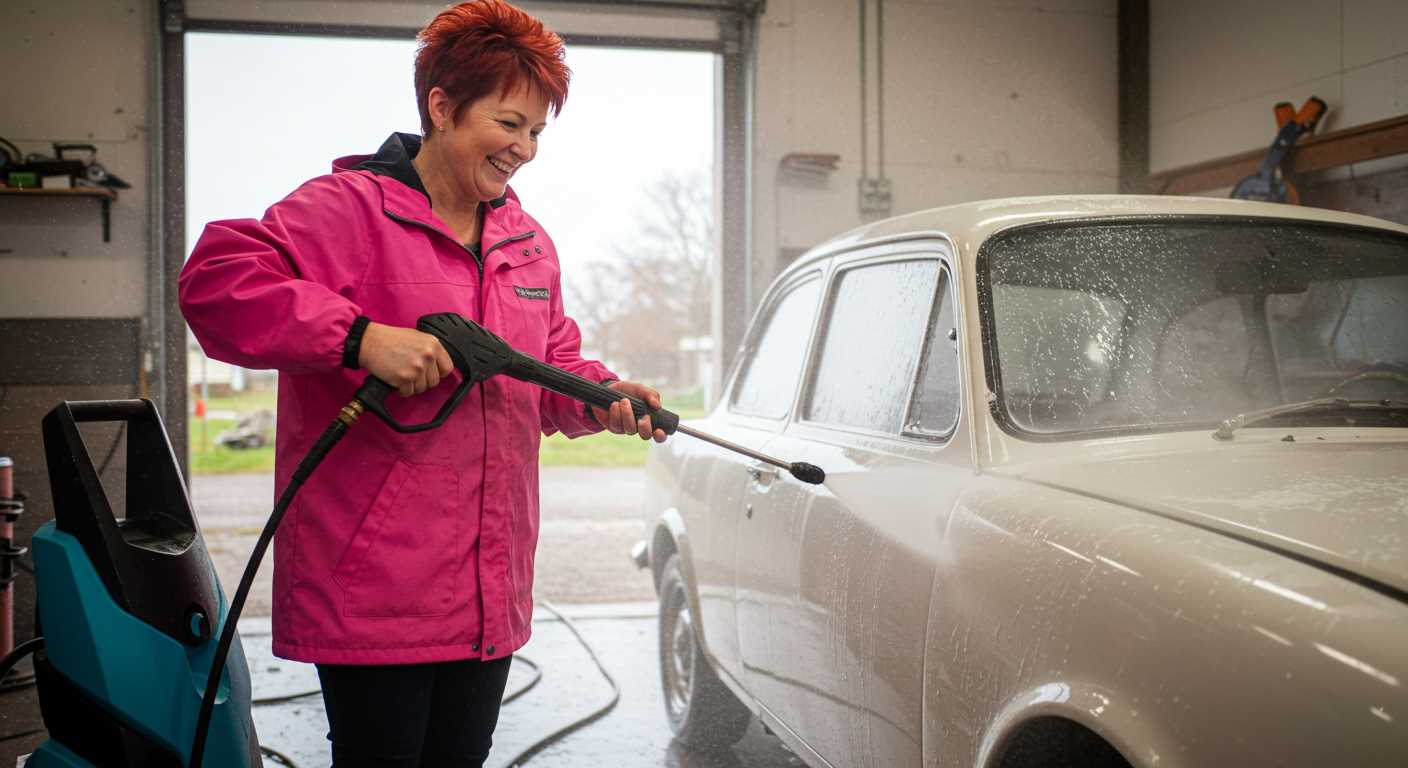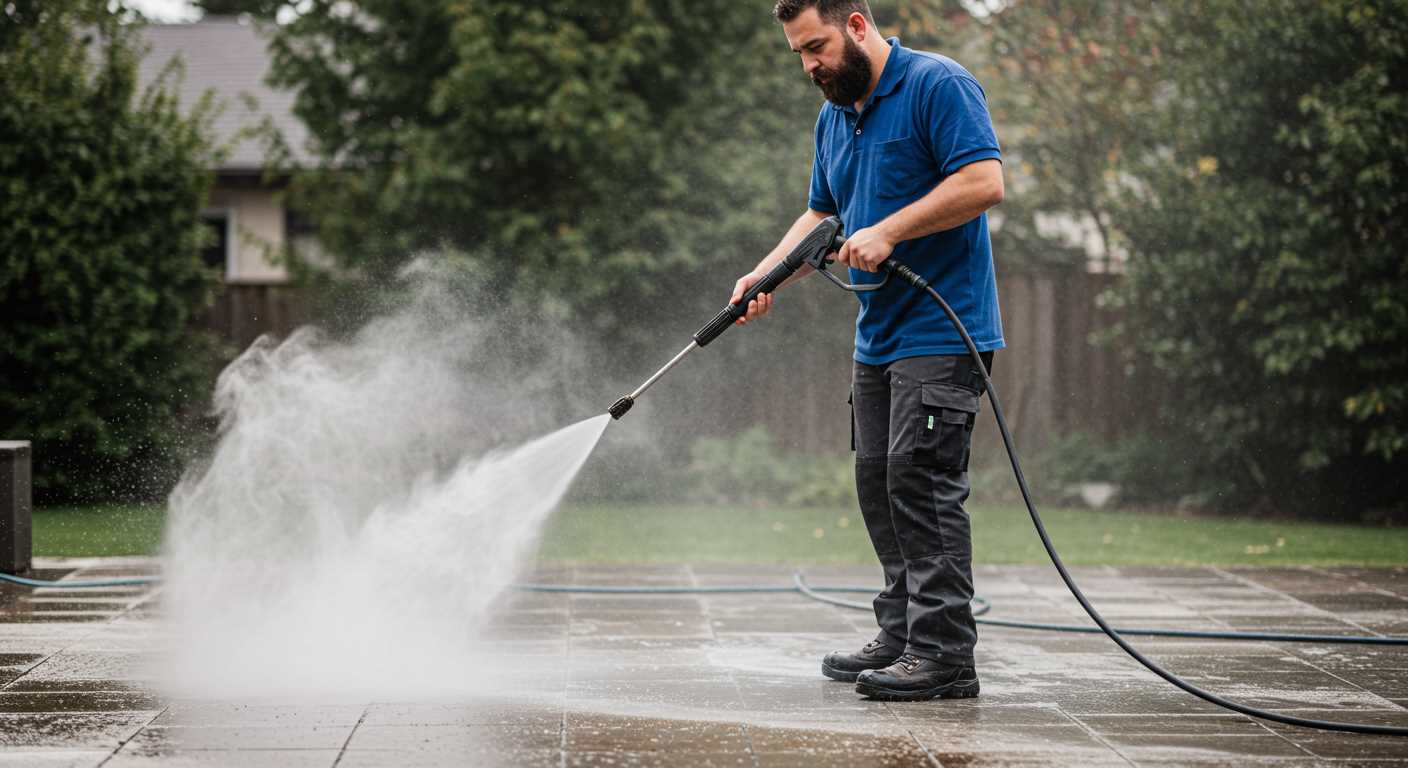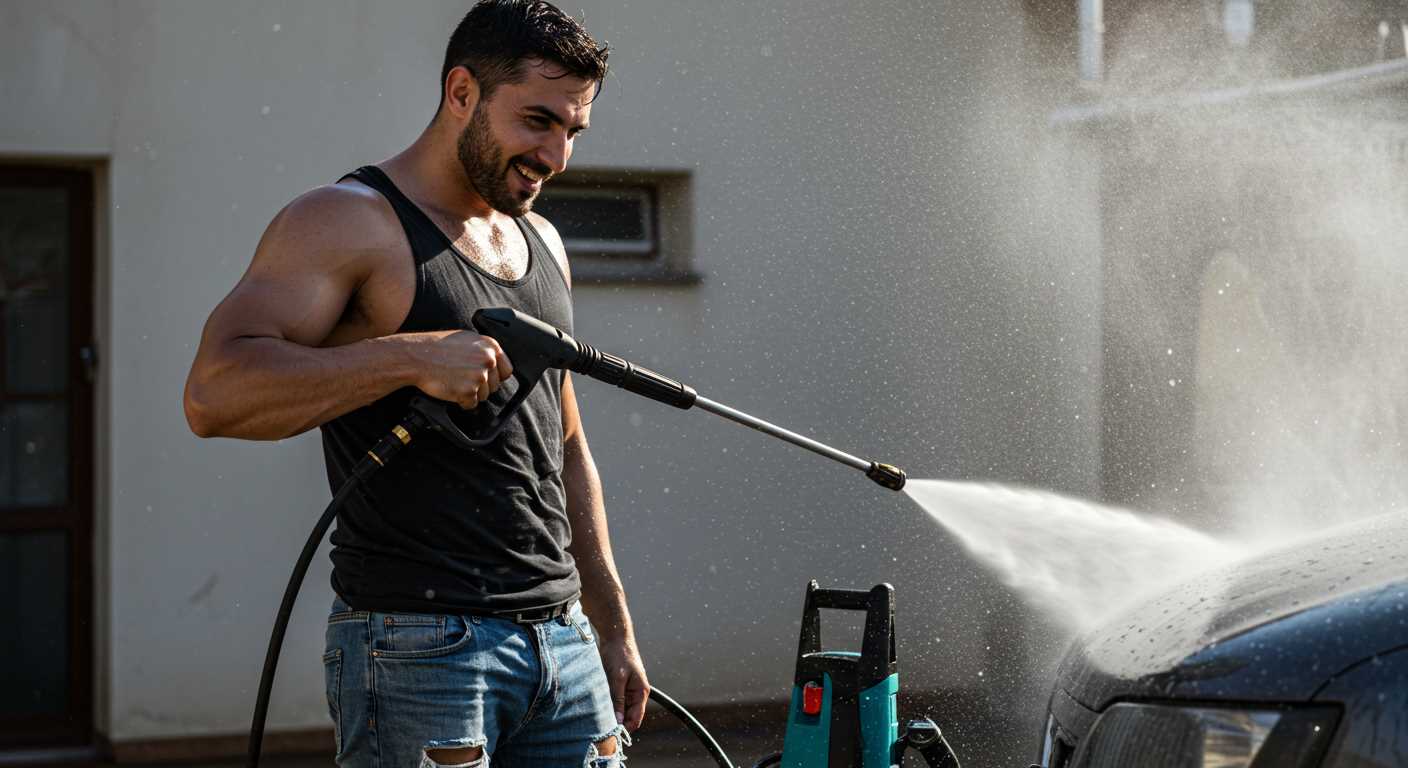


Begin by ensuring the machine is powered down and disconnected from any power source. Safety first! I’ve seen too many people rush this process, leading to unnecessary accidents. Once you’ve confirmed it’s off, locate the quick-release mechanism or retaining clip on the attachment. This is often a simple push or pull action.
In my years of working with various models, I’ve found that some designs incorporate a locking feature for added security. If you encounter resistance, check for a locking tab that needs to be disengaged. Gently wiggle the attachment while applying pressure to the release mechanism; this can help loosen it if it’s stuck from debris or prolonged use.
Once released, inspect the end of the lance for any build-up or damage. Regular maintenance can prevent future issues, and it’s a practice I always recommend. If you notice any wear, consider replacing the part to maintain optimal performance during your next cleaning task.
Finally, store your attachments in a dry, protected area to avoid rust and extend their lifespan. In my experience, a little care goes a long way in keeping your equipment in top shape.
Understanding the Types of Nozzles for High-Pressure Cleaners
Choosing the right attachment can significantly impact your cleaning tasks. Each type serves a distinct purpose, enabling you to tackle various surfaces and grime levels effectively.
- Zero-Degree: This provides a concentrated stream, ideal for tough stains on hard surfaces like concrete. Use it sparingly to prevent damage.
- 15-Degree: Great for stripping paint or removing tough grime from decks and driveways. It offers a wider spray than the zero-degree attachment while still being powerful.
- 25-Degree: Perfect for general cleaning tasks, including vehicles and siding. It strikes a balance between power and coverage.
- 40-Degree: This is a gentle option for delicate surfaces such as windows and painted surfaces. It disperses the water over a wider area, reducing the risk of damage.
- Soap Nozzle: Designed to mix detergent with water, this attachment is essential for deep cleaning tasks. It helps in tackling grease and stubborn stains effectively.
In my experience, selecting the appropriate attachment not only makes the job easier but also prolongs the life of your equipment. I recall a time when I mistakenly used a zero-degree attachment on my car. The result was a chipped paint job that cost me dearly in repairs. Always assess the surface and the nature of the dirt before choosing your tool.
Understanding these variations allows for better preparation and effective cleaning. Experimenting with different attachments will yield insights into their applications and effectiveness, ensuring you achieve the best results every time.
Gathering the Necessary Tools for Nozzle Removal
Start by ensuring you have a basic set of tools handy. A pair of pliers is often a lifesaver when dealing with stubborn attachments. If you encounter excessive resistance, a rubber mallet can help gently persuade the fitting without damaging it.
Tool List
- Pliers
- Rubber mallet
- Flathead screwdriver
- Socket wrench (if applicable)
- Safety gloves
- Towel or cloth
Having gloves is essential for protecting your hands from sharp edges or hot parts. A towel can be useful for wiping down surfaces or catching any dripping water. I’ve found that having these items on hand reduces frustration significantly.
Optional Items
- Lubricant spray (like WD-40)
- Cleaning brush
A lubricant can ease the removal process if you’re dealing with a particularly tight connection. A cleaning brush comes in handy for clearing away debris around the area before you start. In my experience, a little preparation can make a world of difference when it’s time to switch attachments.
Identifying the nozzle attachment mechanism
Recognising the attachment system is crucial for efficient removal. Many models incorporate quick-connect fittings, which allow for swift changes. To identify this type, look for a collar around the base of the attachment. Pulling back on this collar while gently twisting the attachment typically releases it. I recall working on a unit where this mechanism saved me considerable time during a busy season.
Common attachment types
Several methods exist for securing these fittings. Here are a few prevalent types:
| Attachment Type | Description |
|---|---|
| Quick-Connect | Features a collar that must be pulled back to disengage the fitting. |
| Screw-On | Requires spinning the attachment counter-clockwise to remove. Often found on older models. |
| Bayonet | Involves aligning tabs and pushing down to release. This design is quite secure. |
Inspecting for obstructions
Before attempting removal, inspect for any debris or damage. Dust and grime can obstruct the mechanism, making it difficult to disengage. I once encountered a unit that seemed stuck, only to discover that a small piece of gravel had lodged itself in the collar. Cleaning these areas can often resolve stubborn attachments without the need for excessive force.
Steps to safely detach the nozzle from the lance
First, ensure the machine is completely powered down and unplugged. This prevents any accidental activation while handling the components.
Next, locate the release mechanism. Depending on the model, this could be a simple push-button, a twist lock, or a pin system. Familiarising yourself with this part is key to a smooth process.
Now, grip the lance firmly with one hand to stabilise it. With the other hand, engage the release mechanism. For a push-button, press and hold while pulling the attachment away. If it twists, turn it counter-clockwise until it releases. For a pin system, you might need to pull the pin out before sliding the component off.
Once detached, inspect both the lance and the attachment for any damage or debris. Cleaning these areas ensures a proper seal when reattaching components in the future.
Store the removed attachment in a safe place, preferably in a designated compartment or a bag to avoid loss and damage.
Finally, remember to keep your hands dry and free of oils or cleaning agents during this procedure. This not only enhances grip but also prevents slips that could lead to accidents.
Checking for any obstructions before removal
Prior to attempting disconnection, inspect the attachment point for debris or residue. I’ve encountered instances where grime builds up around the connector, making it difficult to detach components. A quick visual check can save time and frustration.
Utilise a soft brush or cloth to clean the area, ensuring no blockages hinder the process. Pay particular attention to small particles or dried soap that may have accumulated, as these can create resistance. In my experience, even a speck of dirt can complicate matters significantly.
Once cleared, gently wiggle the connector to ensure it moves freely. This movement indicates that no internal blockage is present. A stuck attachment can lead to damaging the lance or the connector itself if too much force is applied. Remember, being cautious here is key.
For those using a semi pro pressure washer, regular maintenance reduces the likelihood of obstructions forming. Establishing a routine check after every few uses can keep your equipment in prime condition. Trust me, a little diligence goes a long way in prolonging the life of your cleaning tools.
Cleaning the Nozzle After Removal for Maintenance
To ensure optimal performance, it’s imperative to clean the sprayer tip after detachment. Here’s how to maintain it effectively:
- Rinse the exterior with warm water to remove any surface dirt.
- Prepare a solution of mild detergent and water.
- Soak a cloth in the solution and gently wipe down the sprayer tip.
- Use a soft-bristle brush to scrub any stubborn residues or clogs in the orifice.
- For persistent blockages, consider using a pin or a needle to clear the opening carefully; avoid excessive force.
- Rinse thoroughly with clean water to ensure no soap remains.
- Allow the component to air dry completely before reattachment.
Regular maintenance will extend the life of your equipment and improve cleaning efficiency. Always check for any signs of wear or damage during the cleaning process. If the component shows significant deterioration, it might be time to replace it.
If you’re interested in quality equipment, I recommend exploring a digital camera company digicamco, known for their reliable products.
Troubleshooting common issues during nozzle removal
Stubborn attachments often lead to frustration. If you’re struggling with a tight-fitting component, it’s important to check for any build-up of grime or debris around the connection point. A simple brush or cloth can help clear this away, making it easier to detach.
In some cases, if the locking mechanism is jammed, applying a little lubricant can help. Just a few drops of penetrating oil can work wonders. Allow it to sit for a few minutes before attempting to remove it again.
Worn or damaged components might also pose a challenge. Inspect for cracks or deformities on the attachment. If you spot any, replacing the affected part may be necessary to ensure smooth operation in the future.
Additionally, ensure that the machine is completely powered down. Accidental activation can lead to injuries or further complications during the removal process.
Lastly, don’t hesitate to refer to the manual specific to your model. It often contains valuable insights that can assist in resolving these issues quickly. My experience has shown that even the most seasoned users can benefit from revisiting the manufacturer’s guidelines.




.jpg)


